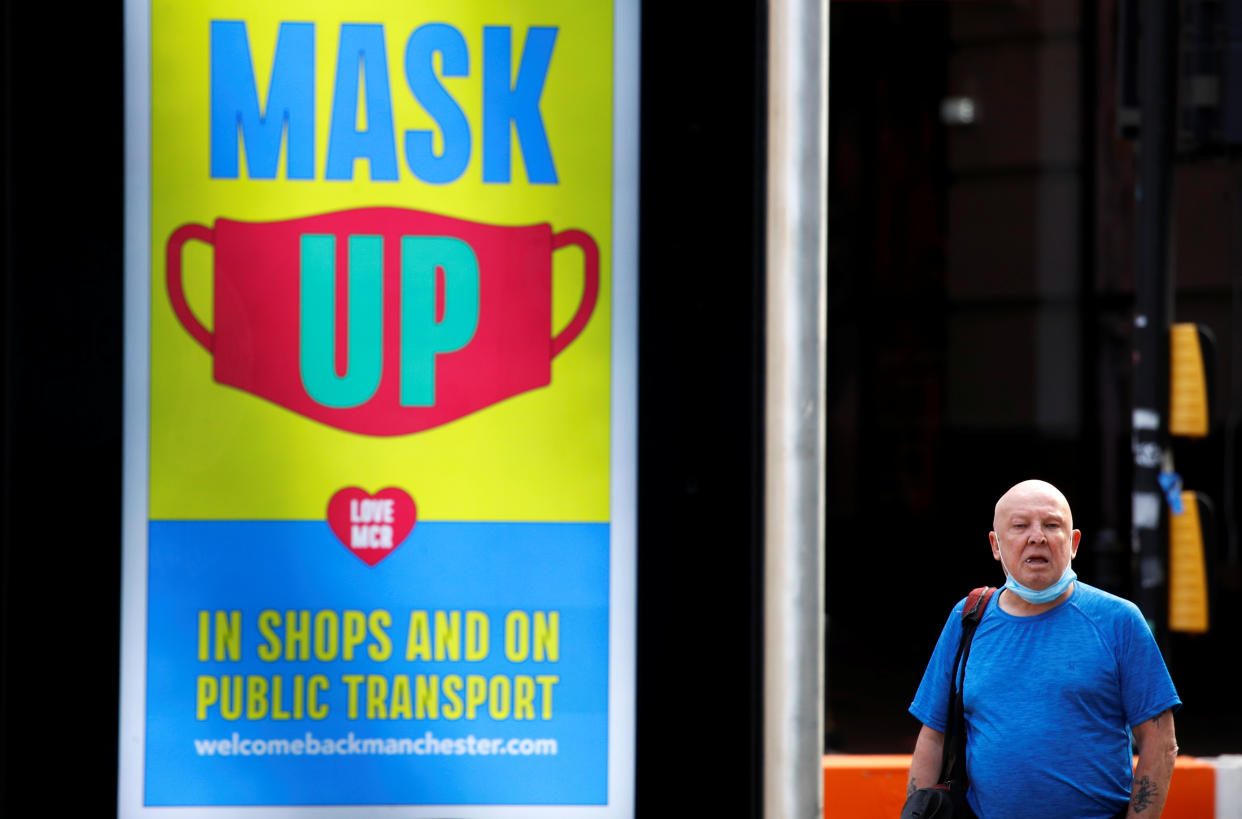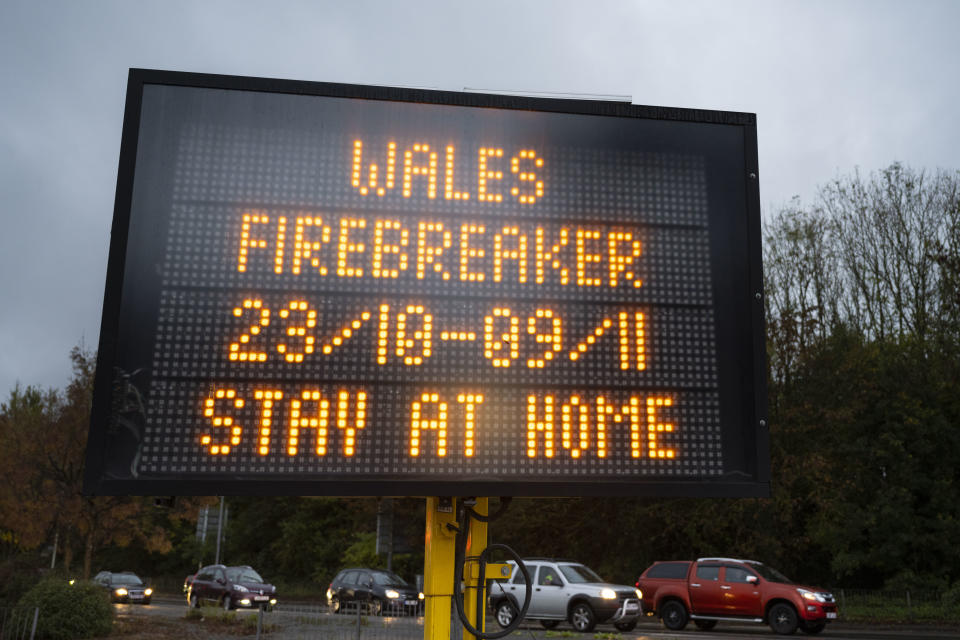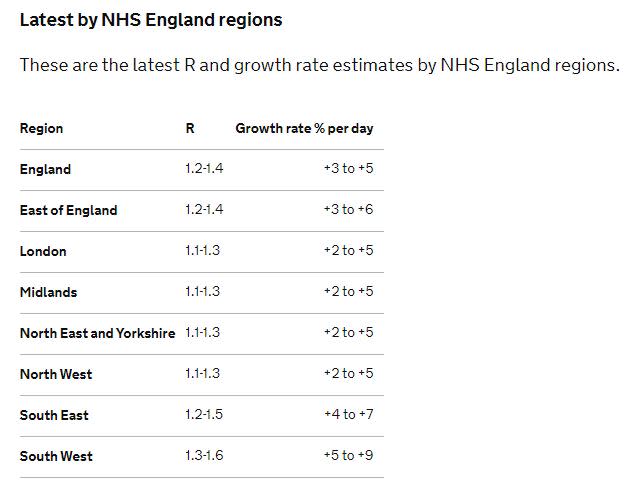Coronavirus: UK R rate drops slightly to between 1.2 and 1.4

The UK’s rate of coronavirus infection is 1.2 to 1.4, indicating a small decrease over the past week.
The R rate for the United Kingdom, published by the government every Friday, represents the rate of spread of COVID-19 across the country.
Figures released this week show that the R rate is down from its previous level of 1.3-1.5, meaning the increase in infections could be starting to slow.
The growth rate is also published, showing how fast the virus is spreading through communities. This has also dropped slightly to 3% to 6% from 4% to 7%, meaning the number of new infections is growing by 3% to 6% every day.
The data shows that the number of COVID-19 infections in the UK are continuing to increase, but at a slightly slower pace.
Experts on the government's Scientific Advisory Group for Emergencies (SAGE) published the latest figures on Friday.

A statement from SAGE warned that spread of COVID-19 is still rife. It said: “It is SAGE’s expert view, however, that this week’s estimates are reliable, and that there is still widespread growth of the epidemic across the country.”
Boris Johnson continued his three-tier approach to lockdown this week, a week that saw Greater Manchester and South Yorkshire join the Liverpool City region and Lancashire in Tier 3 - ‘very high’.
Other areas including Slough, Stoke-on-Trent and Coventry join all London boroughs in Tier 2.
It is estimated that nearly 450,000 people in England are infected with the coronavirus, a major study also published on Friday found.
The Office for National Statistics (ONS) infection survey suggested there were 433,300 people with COVID-19 between between 10 and 16 October, the latest dates for which data is available.
This was up from 336,500 people estimated to have had COVID-19 the week before.
The figures suggest that around one in 130 people in the country are infected.
At 6pm on Friday Wales will enter a ‘firebreaker’ lockdown in an attempt to stall the the spread of coronavirus in the country. Scotland has also announced tighter lockdown measures and will introduce a five-tiered system of restrictions from 2 November, if approved by Holyrood next week.
In England, the R rate has dropped to as low as 1.1 in the North West and North East as well as London and Yorkshire. All regions have experienced tighter restrictions in the past few weeks.

R rate figures are based on epidemiological data such as hospital admissions, ICU admissions and deaths, meaning it can take up to three weeks for changes in the spread of disease to be reflected in the estimated reproduction rate due to the time delay between initial infection and the need for hospital care.
On Thursday, the government’s chief scientific adviser presented data at a Downing Street briefing suggesting up to 90,000 people a day are being infected with COVID-19 in England.
As of Friday, 44,347 had died with coronavirus in the UK and more than 810,000 infections have been confirmed.
Coronavirus: what happened today
Click here to sign up to the latest news, advice and information with our daily Catch-up newsletter

 Yahoo News
Yahoo News 

